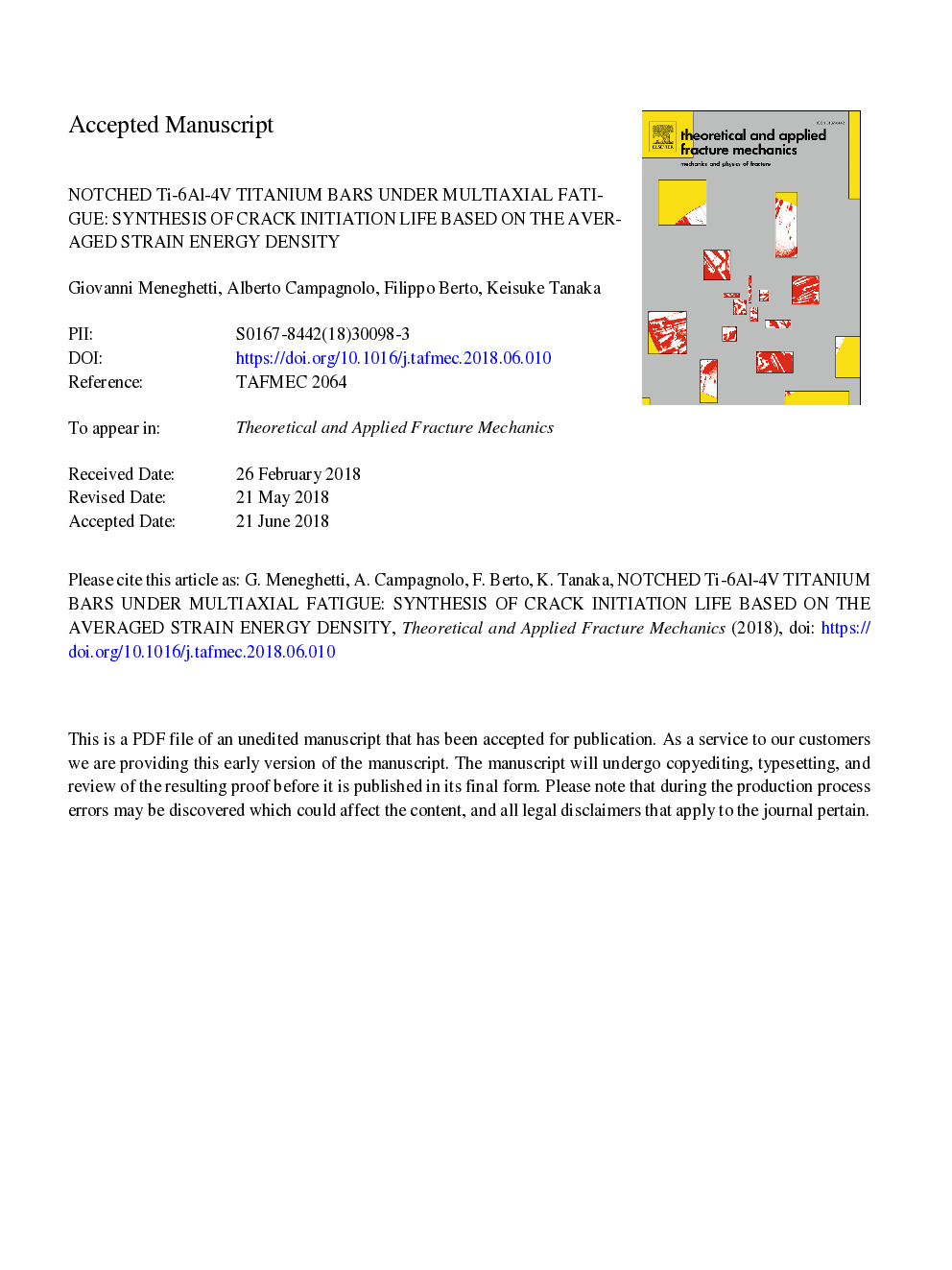| Article ID | Journal | Published Year | Pages | File Type |
|---|---|---|---|---|
| 7196081 | Theoretical and Applied Fracture Mechanics | 2018 | 38 Pages |
Abstract
The fatigue life of notched components subjected to multiaxial loading conditions may be influenced by extrinsic mechanisms operating during crack propagation phase, such as sliding contact, friction and meshing between crack surfaces. These extrinsic mechanisms may disrupt the applicability of local approaches, such as that based on the strain energy density (SED) averaged over a structural volume having size R0 and surrounding the crack initiation point. In the present contribution, the multiaxial fatigue behaviour of circumferentially notched specimens made of titanium grade 5 alloy, Ti-6Al-4V, has been analysed. Pure bending, pure torsion and in-phase as well as out-of-phase combined bending-torsion fatigue tests have been carried out on notched specimens characterized by two different root radii, namely 0.1 and 4â¯mm. Fatigue crack initiation and subsequent propagation have been monitored by adopting the direct current potential drop (DCPD) technique. In principle, crack initiation life has been defined when the initiated fatigue crack fractures the structural volume, which corresponds to a given potential drop increase calibrated by means of electrical finite element (FE) analyses. The structural volume size R0 has been determined by fatigue testing plain and sharp V-notched specimens under pure axial or pure torsion loadings. Finally, the averaged SED approach has been adopted to correlate the experimental fatigue results expressed in terms of crack initiation life, in order to reduce the effect of extrinsic mechanisms.
Related Topics
Physical Sciences and Engineering
Engineering
Mechanical Engineering
Authors
Giovanni Meneghetti, Alberto Campagnolo, Filippo Berto, Keisuke Tanaka,
